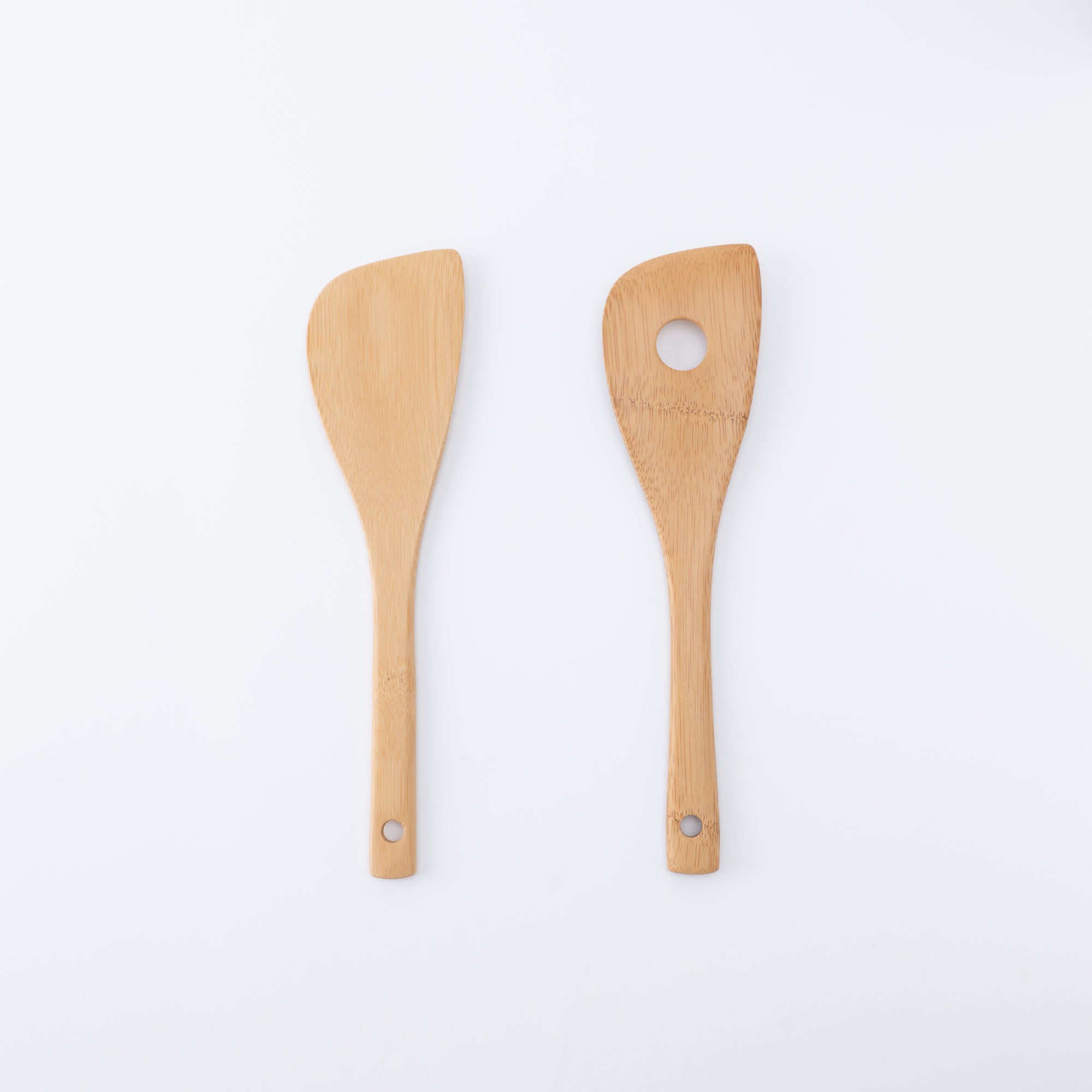
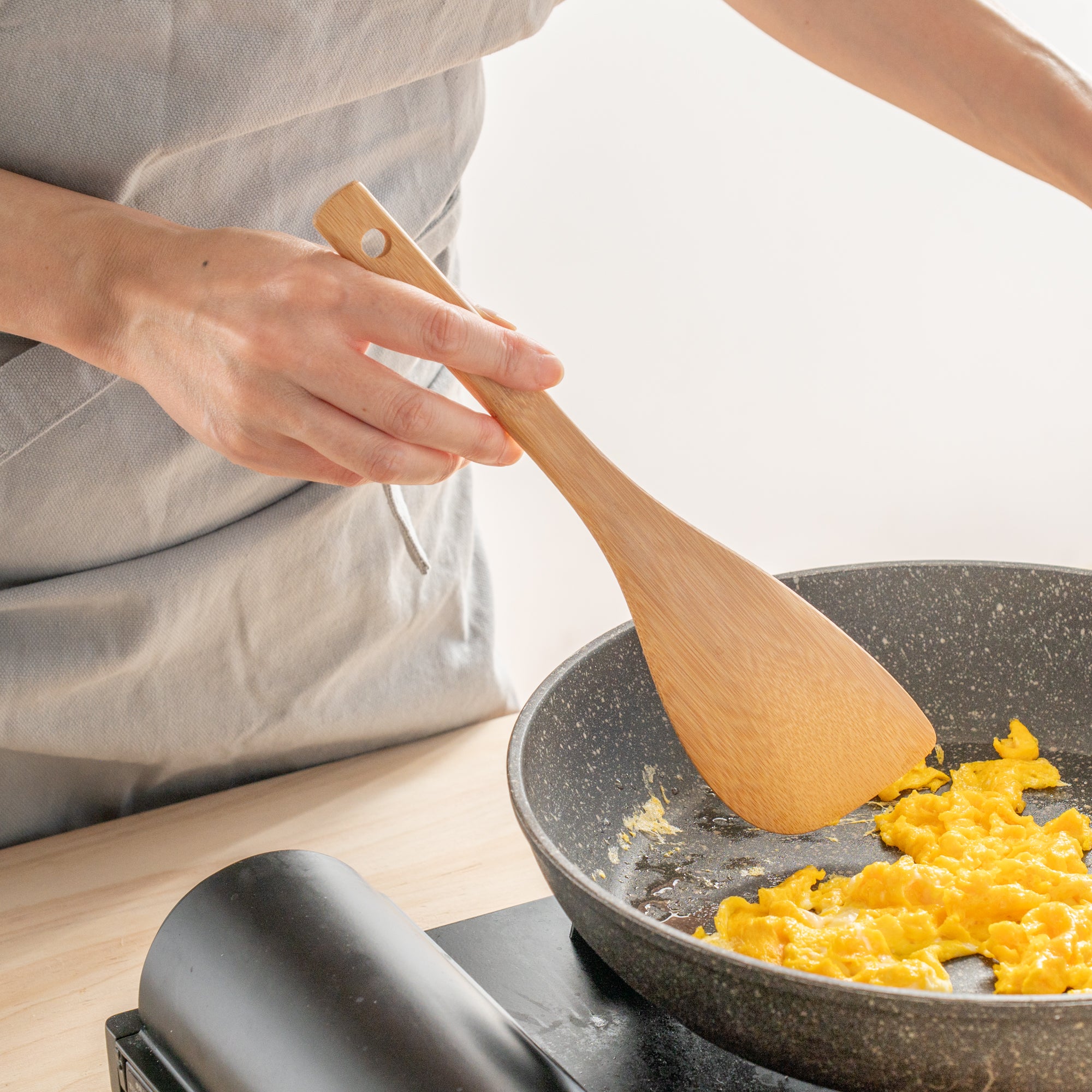
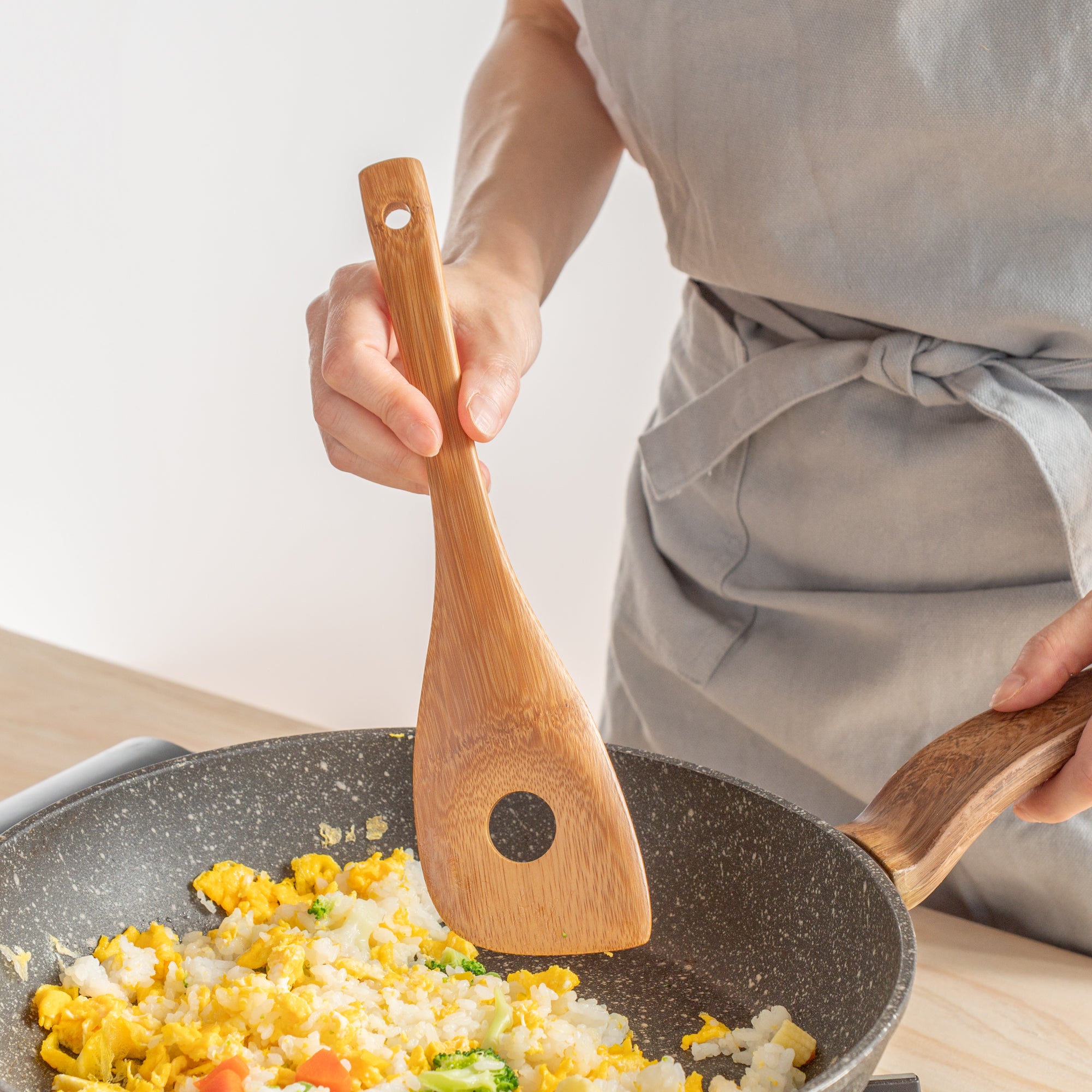
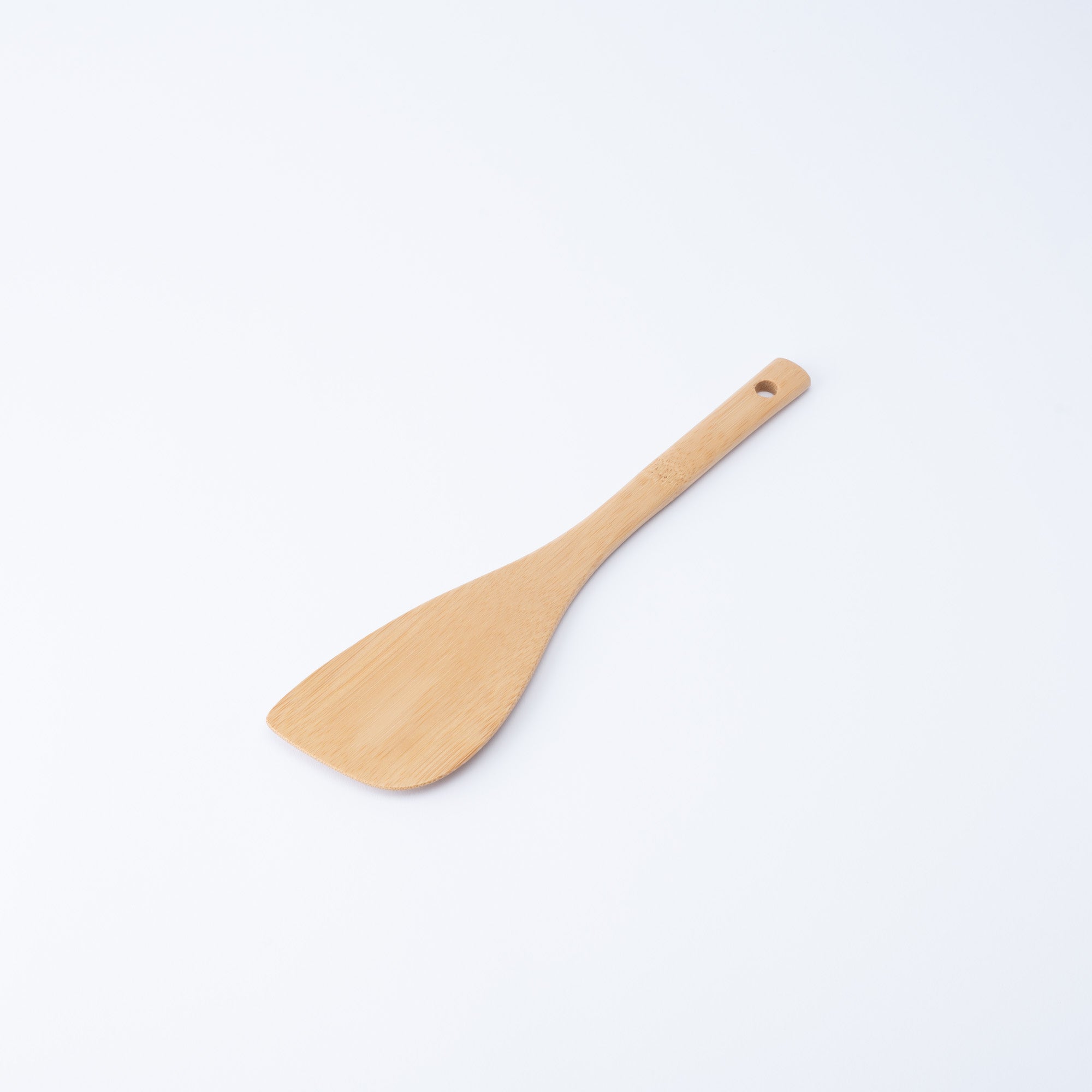
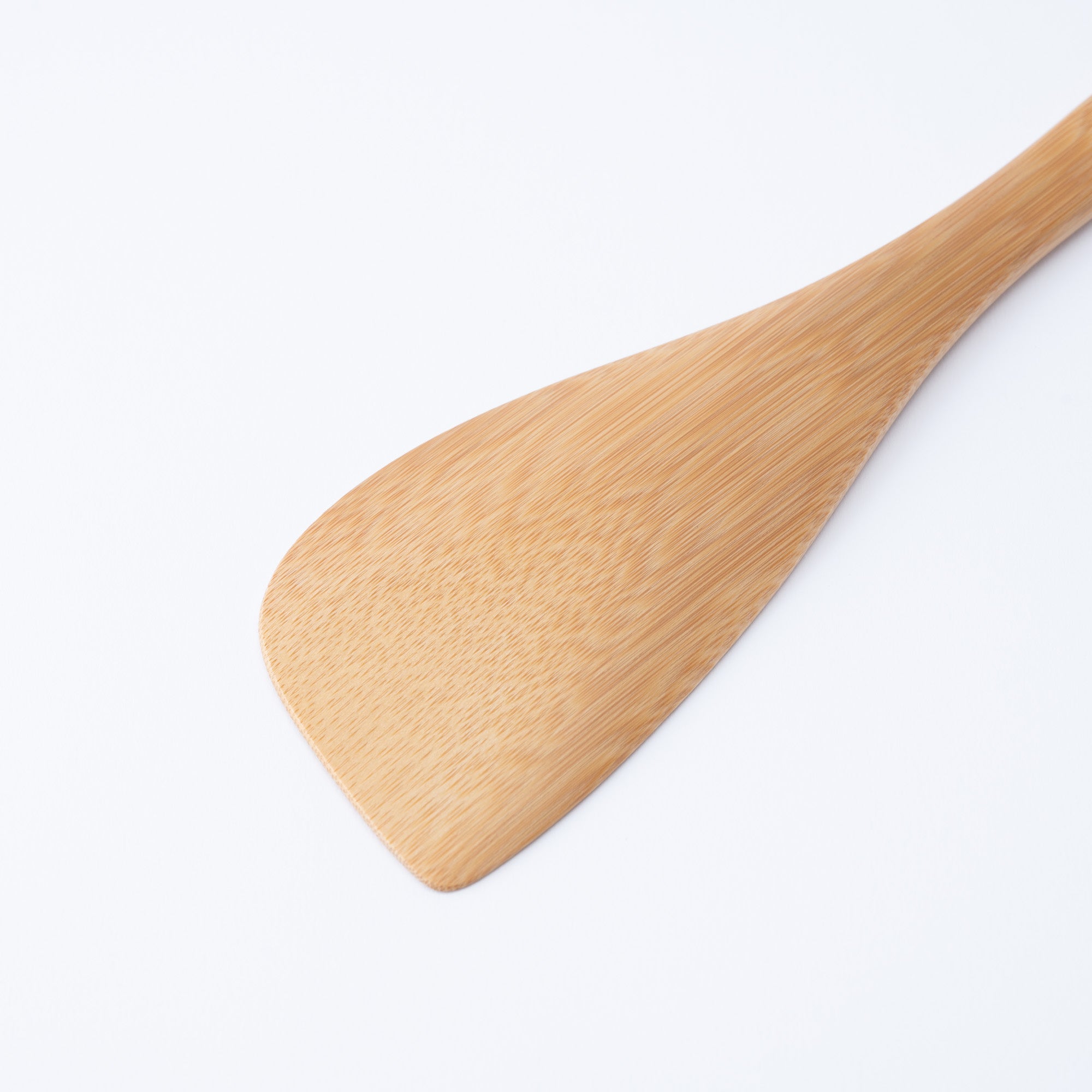
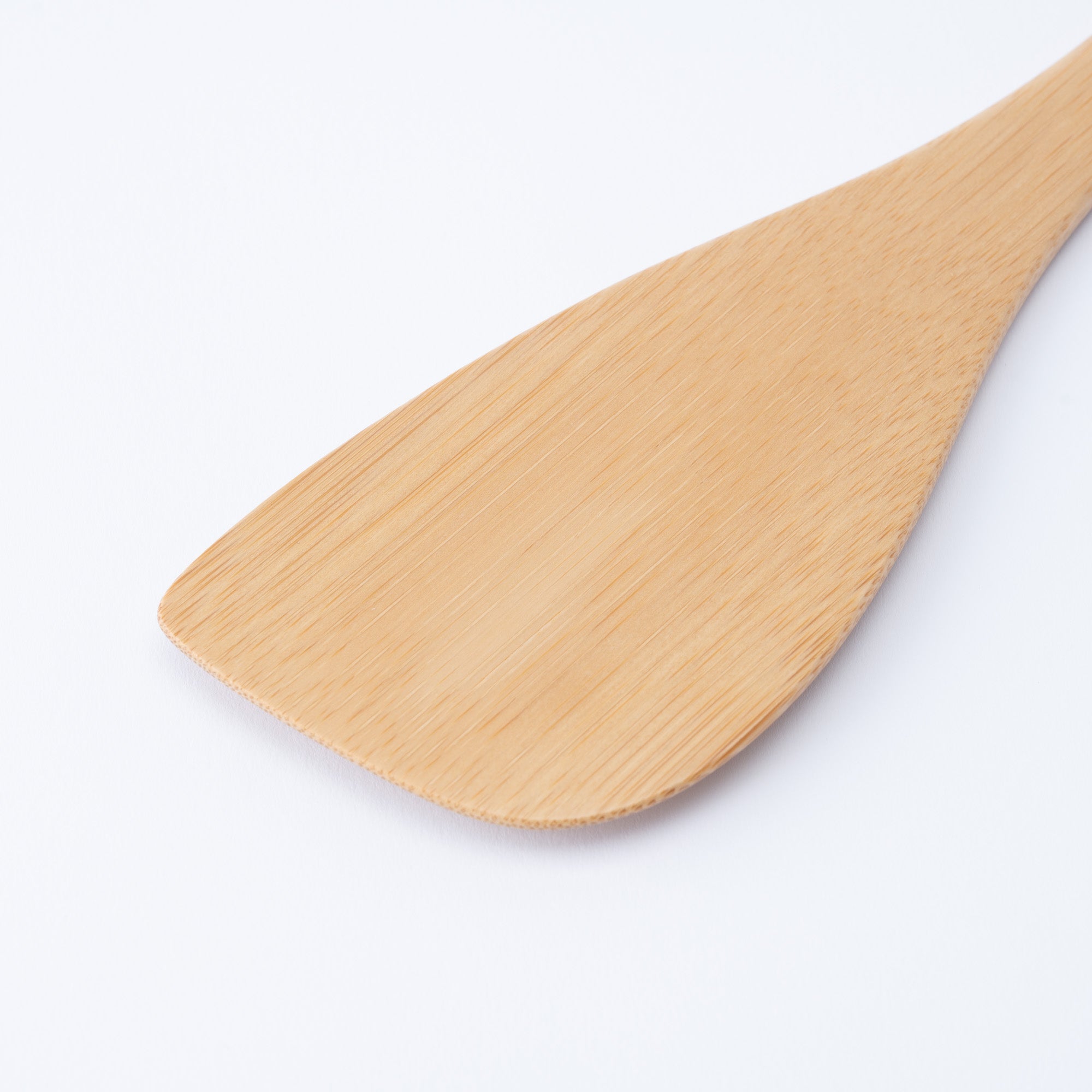
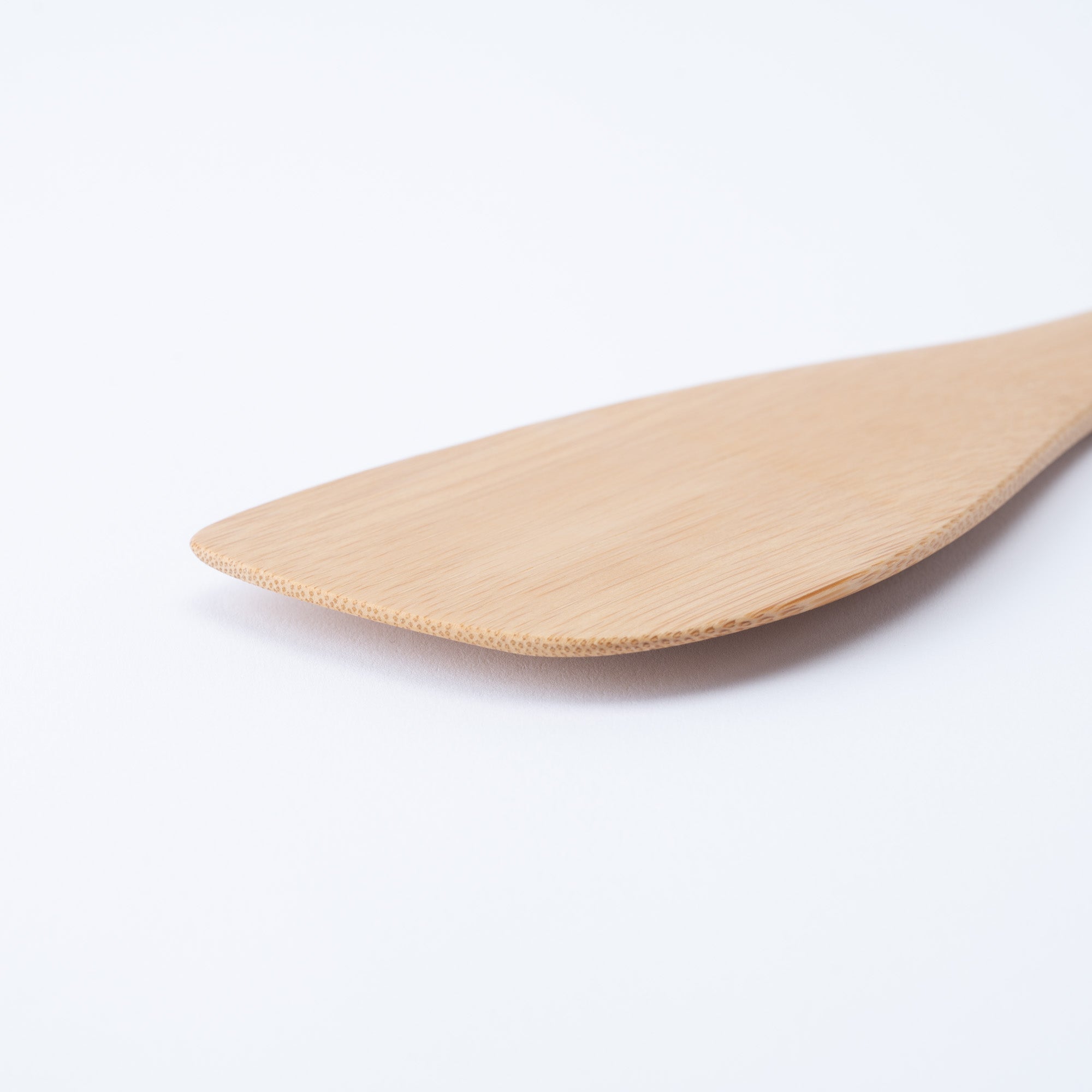
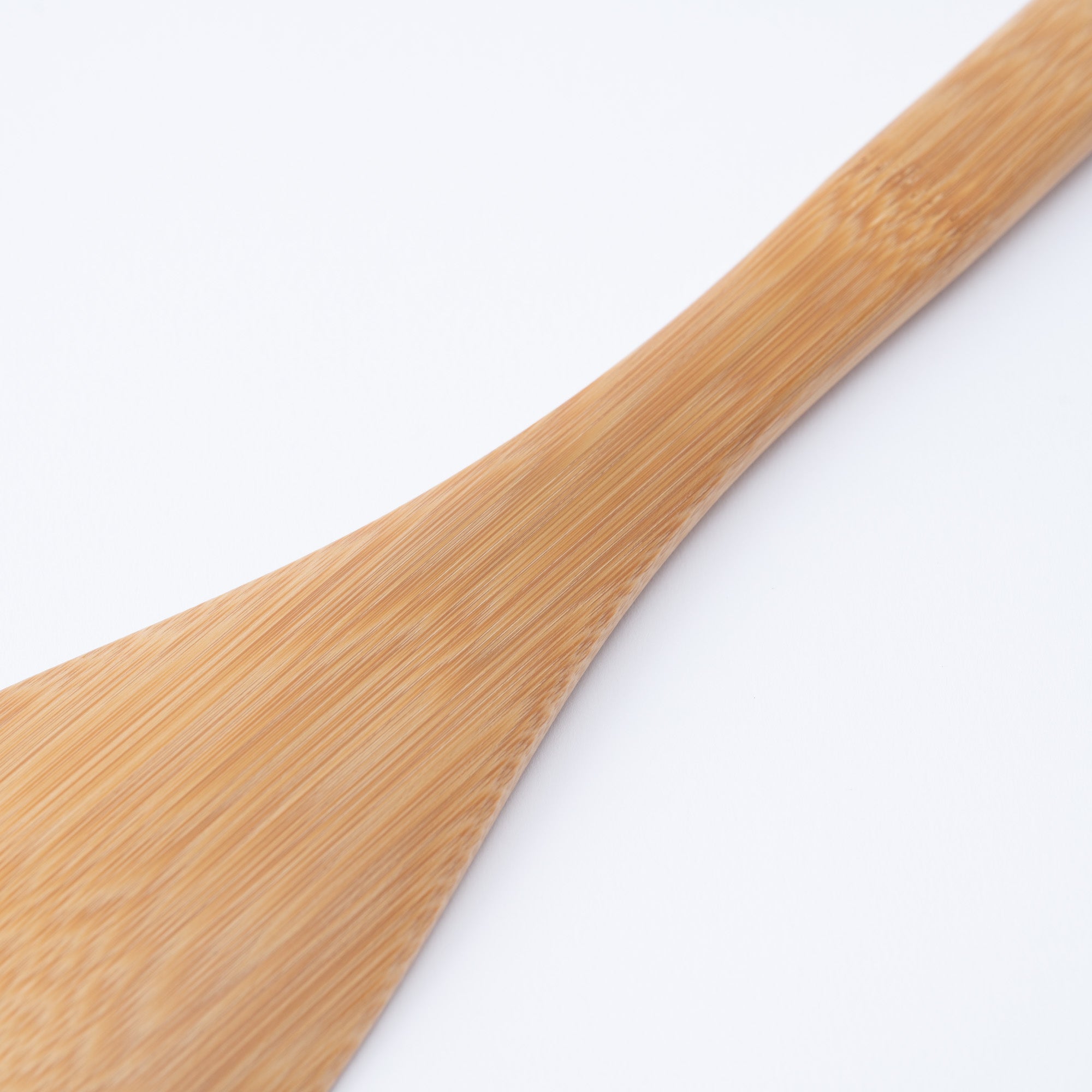
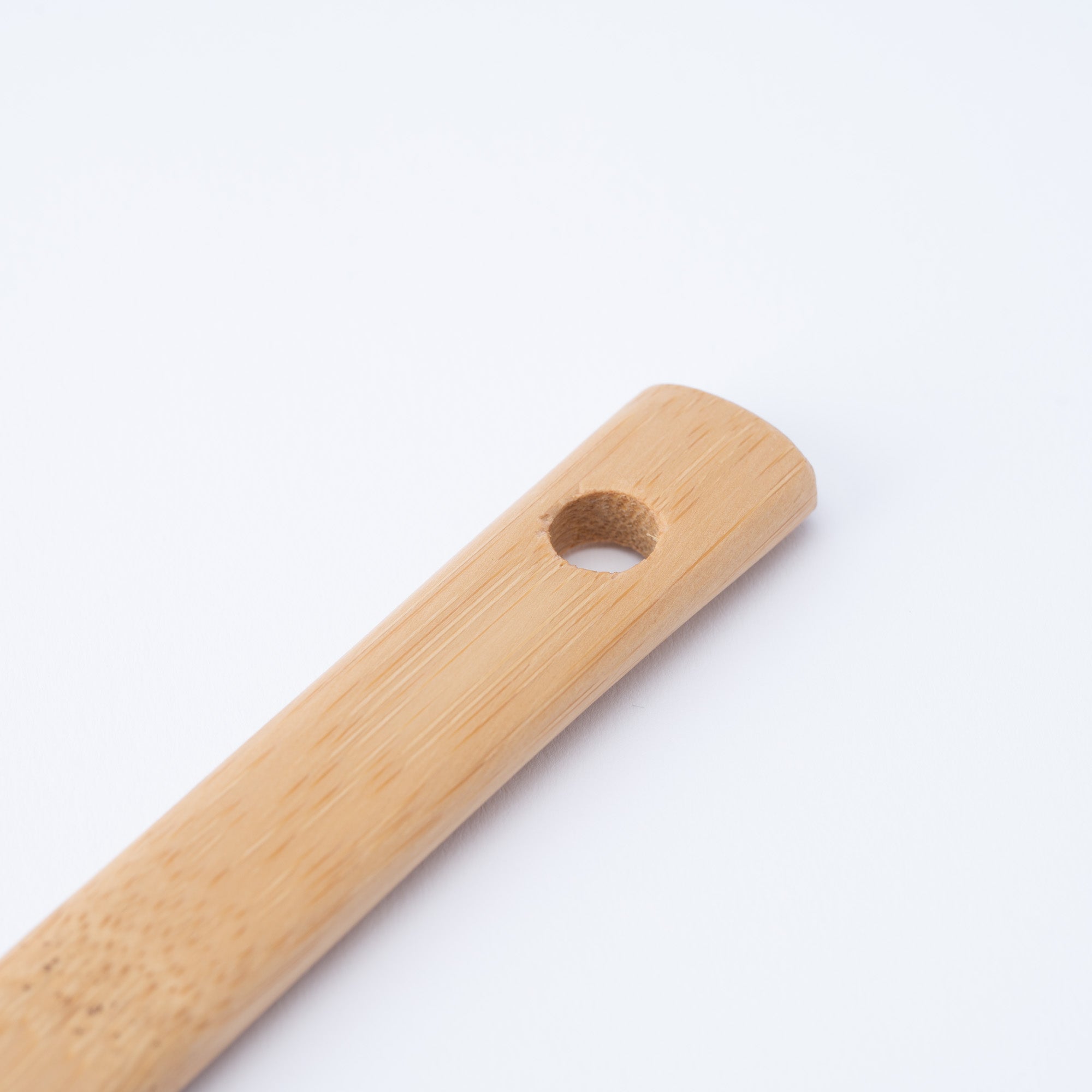
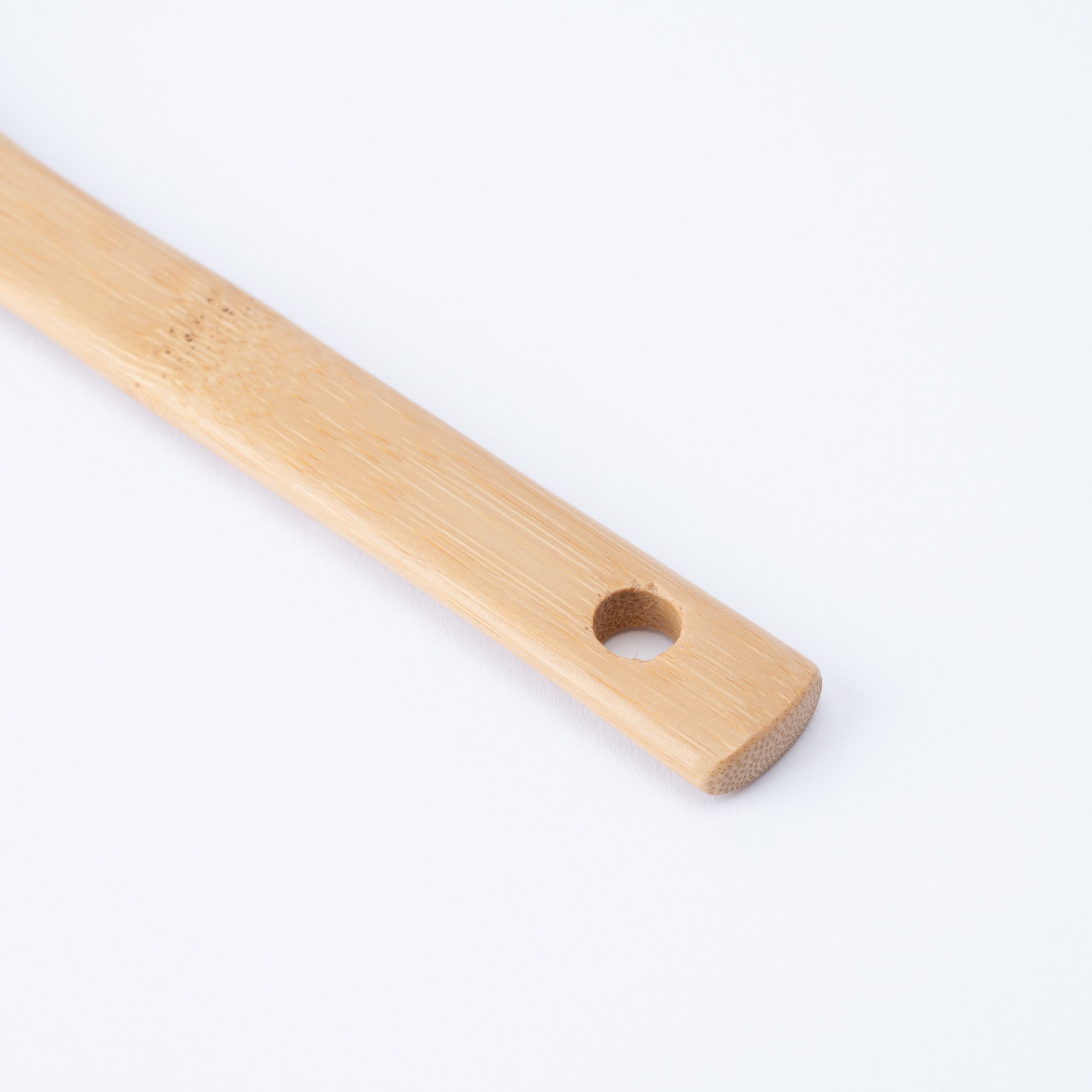
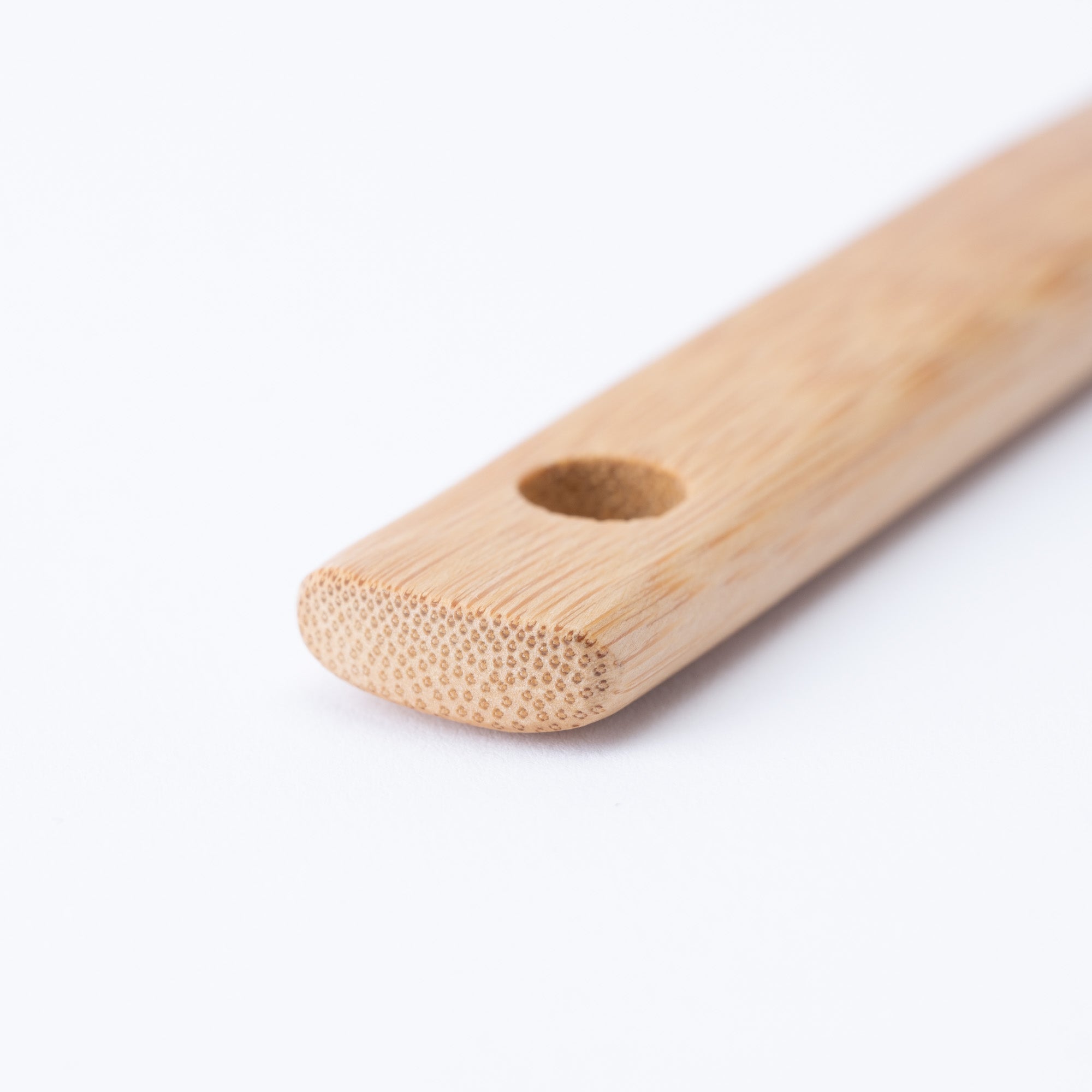
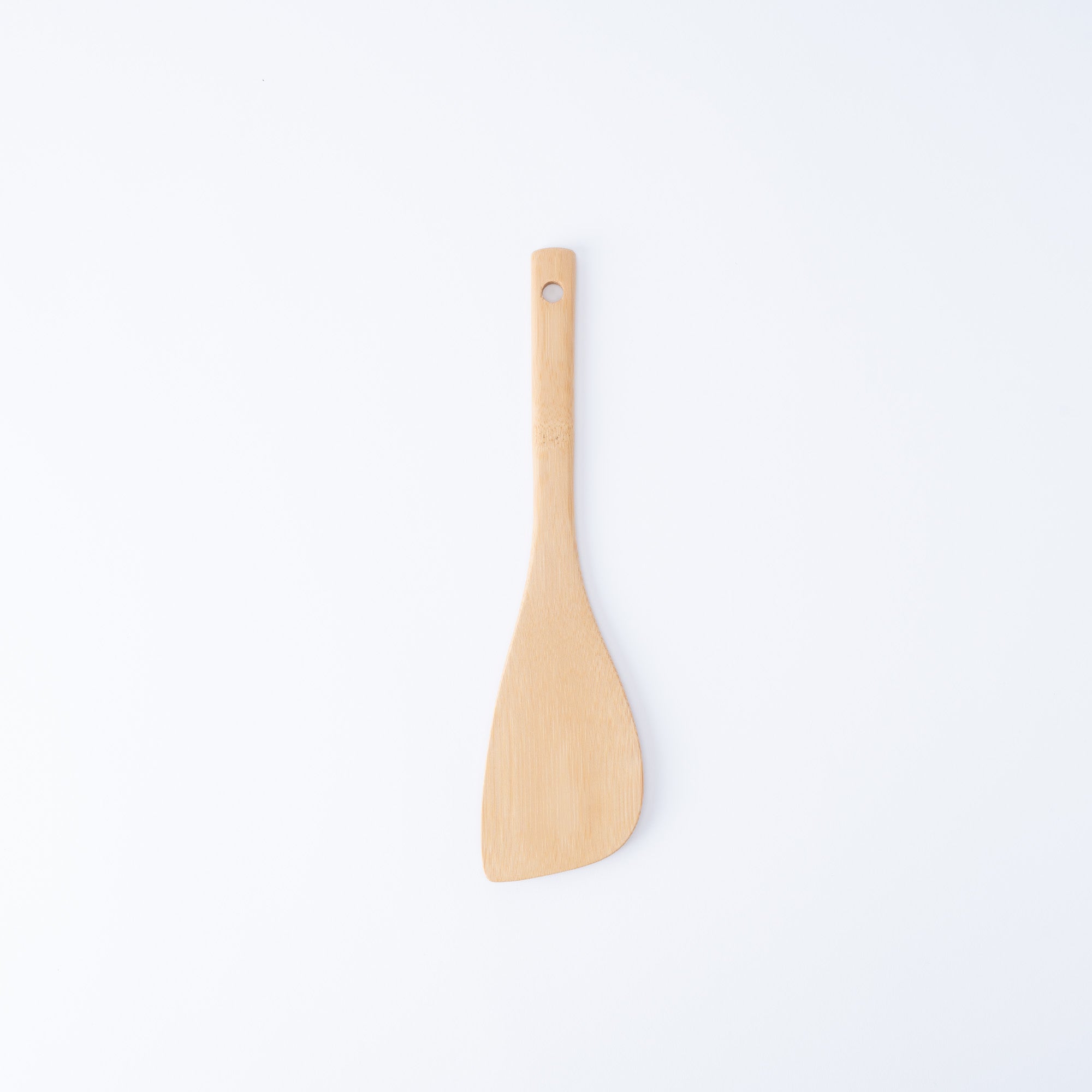
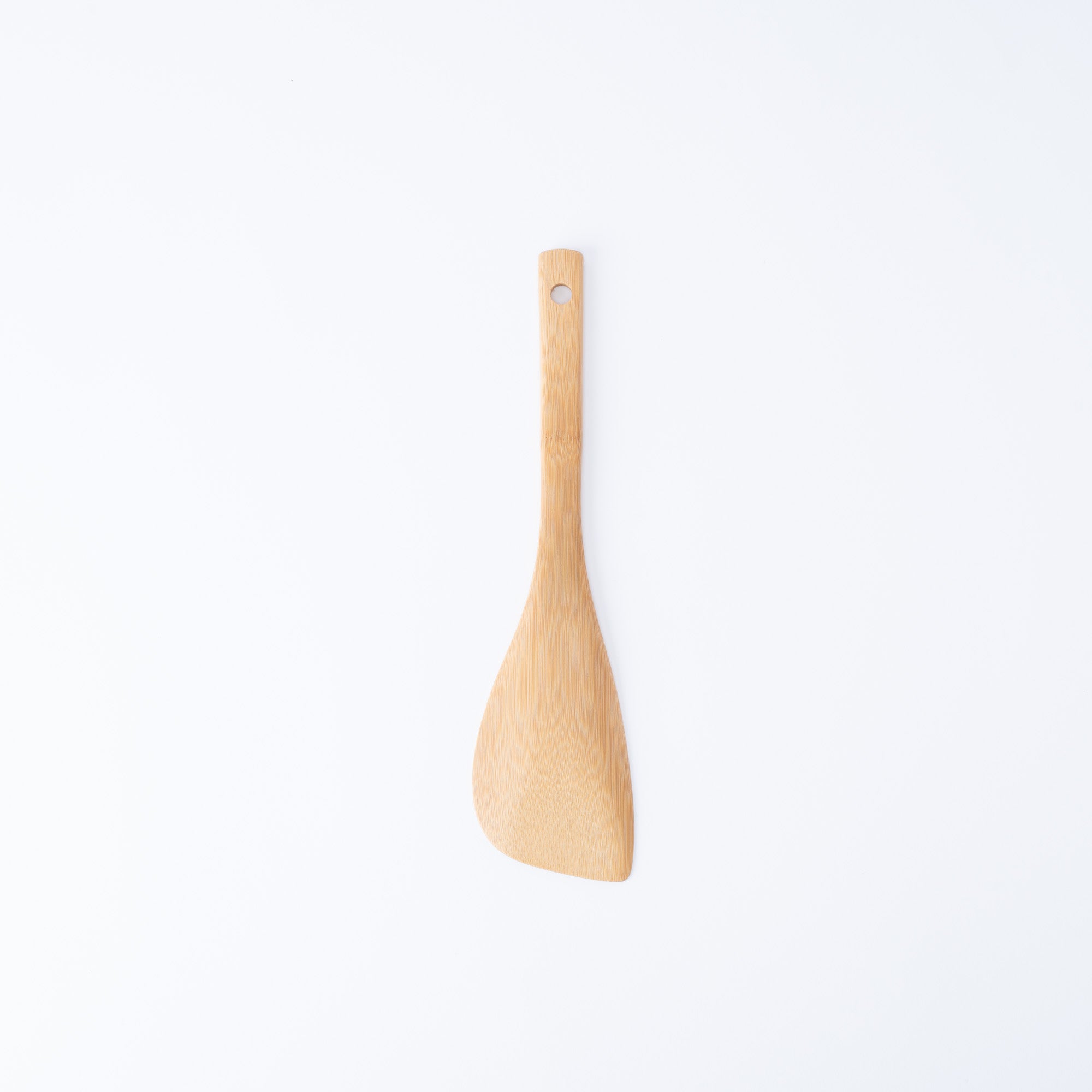
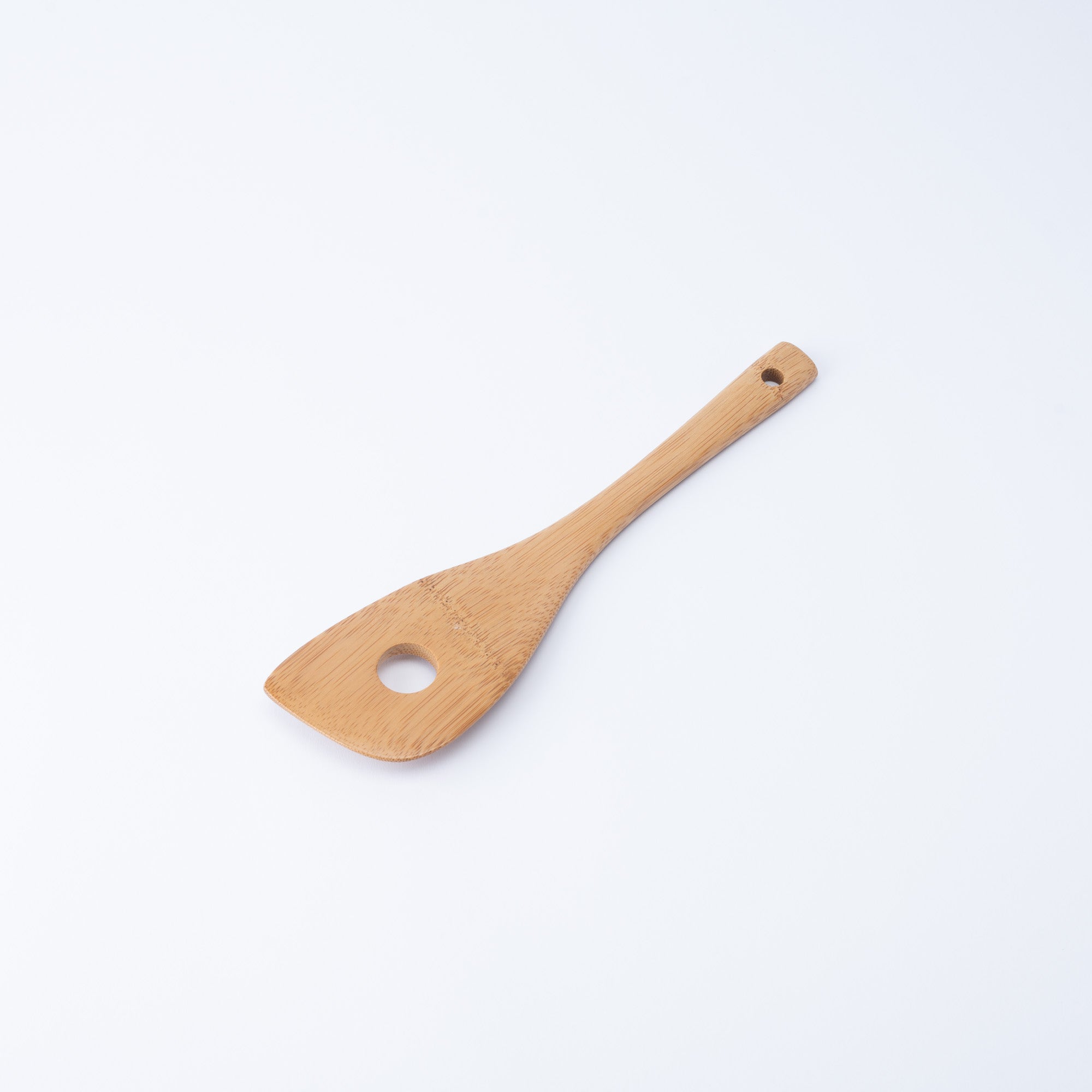
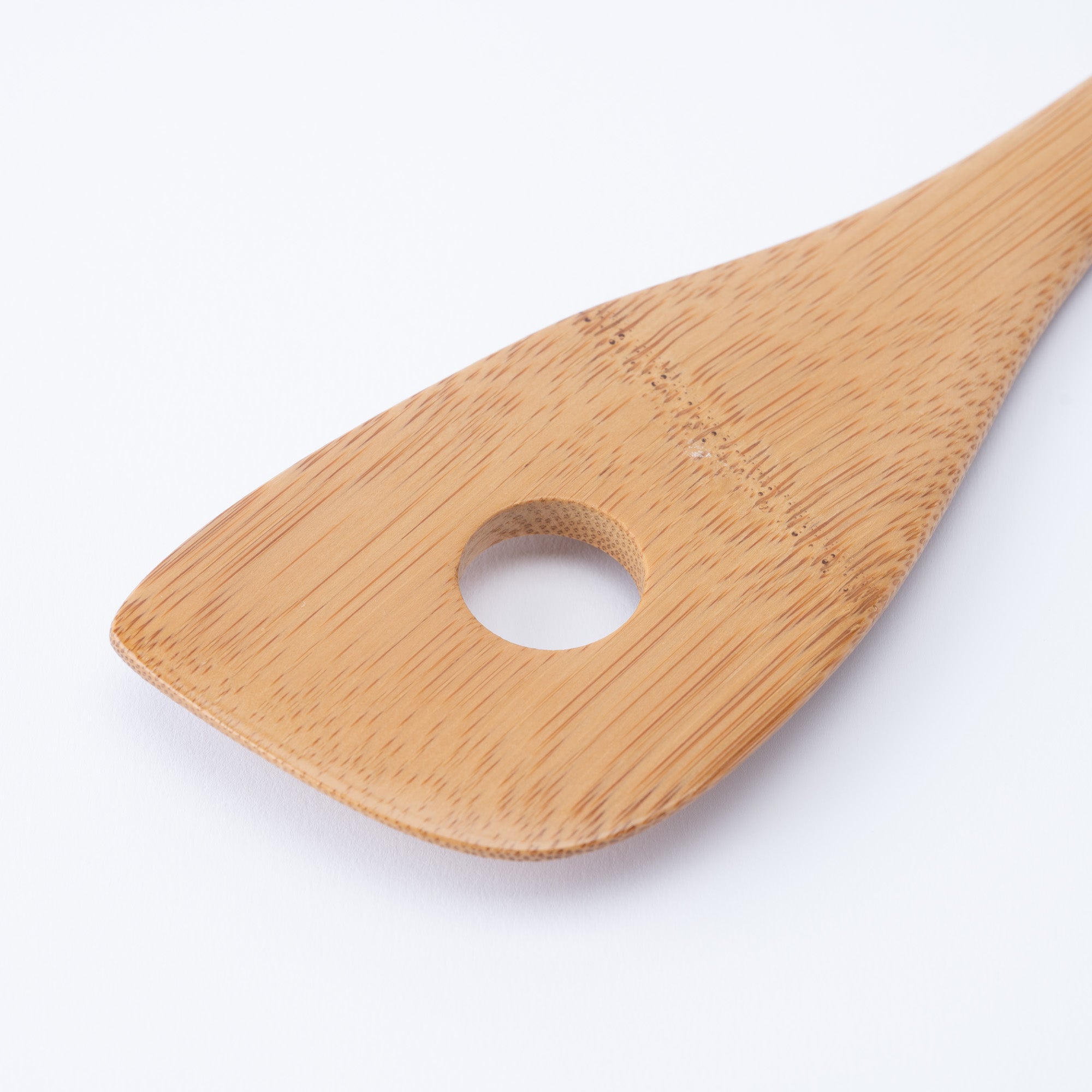
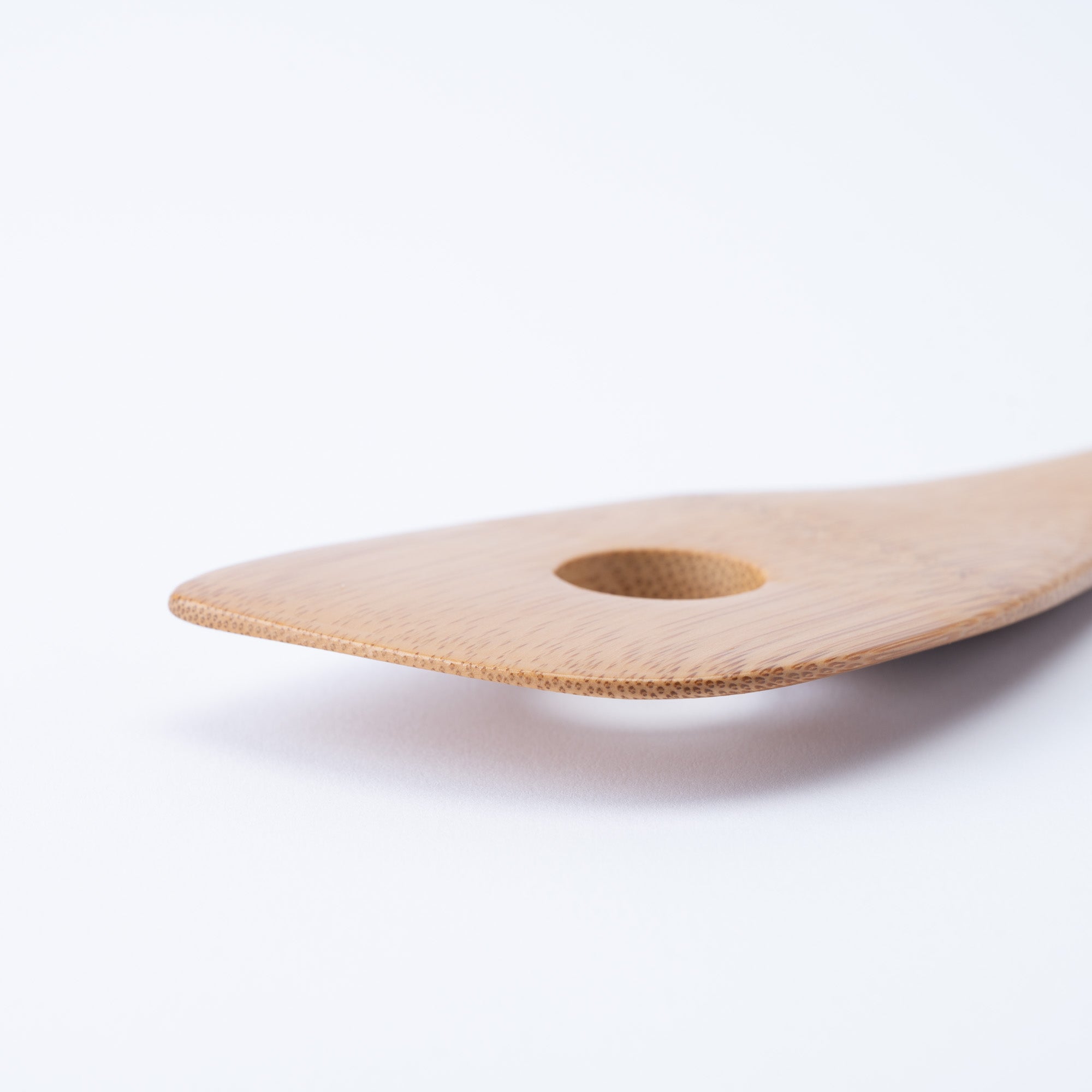
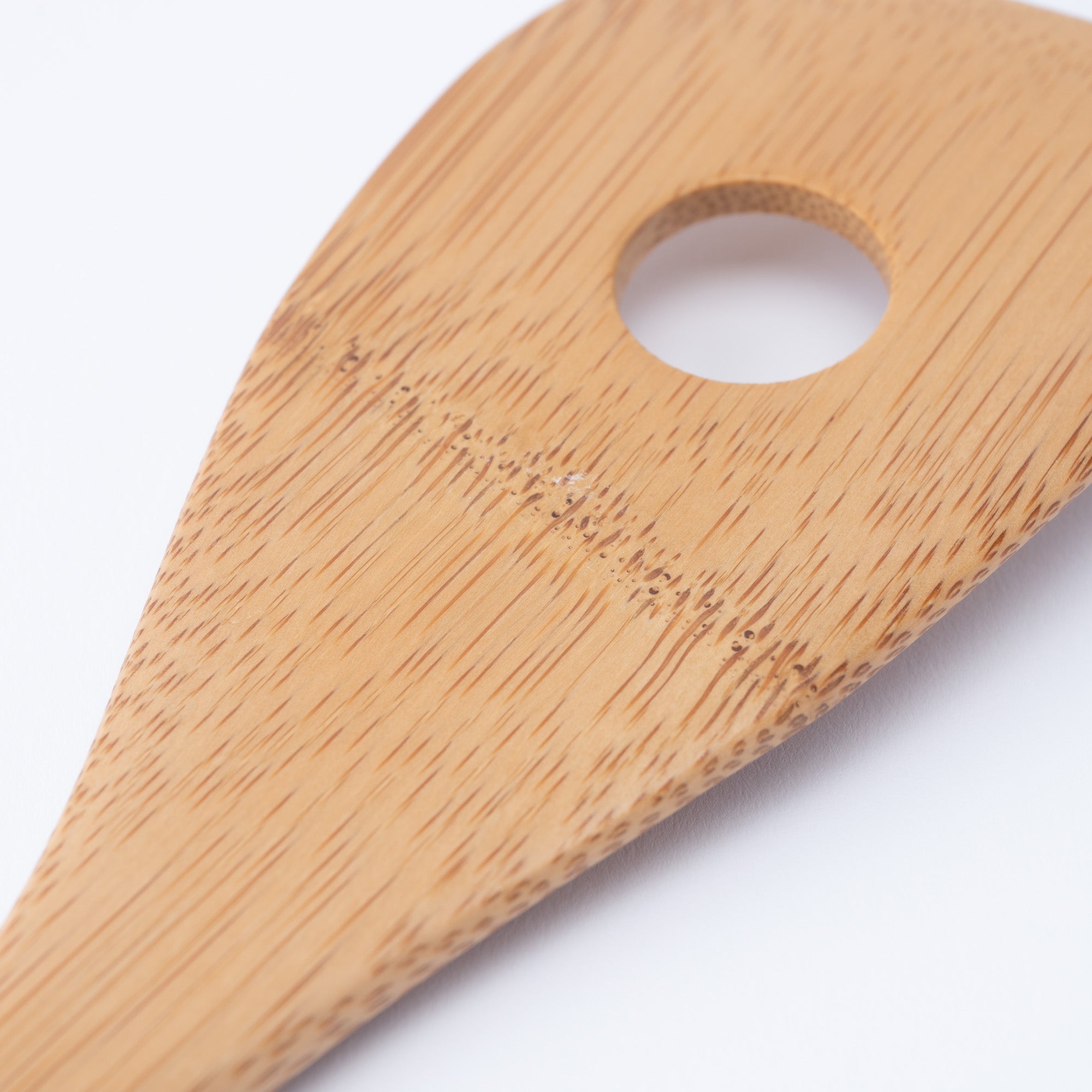
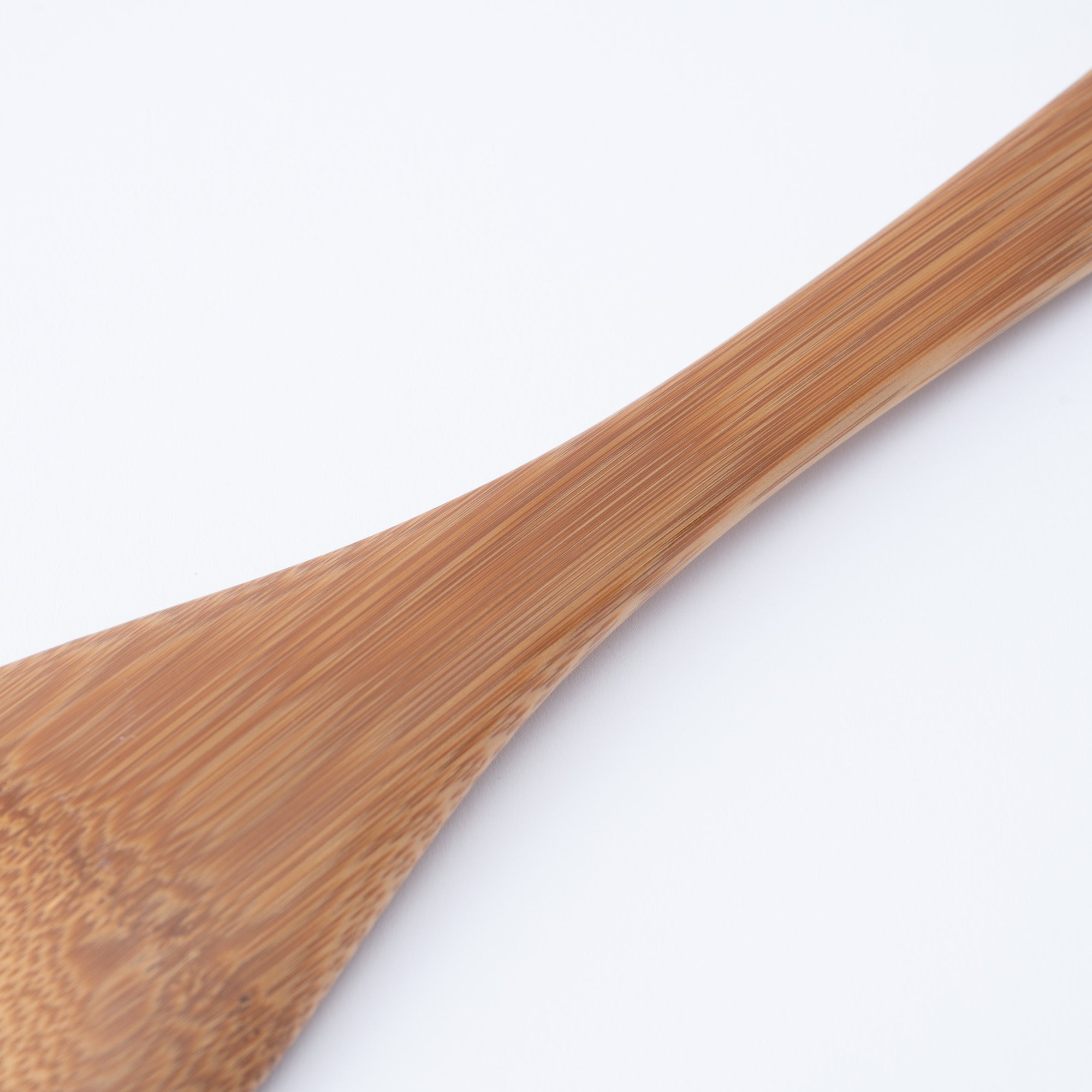
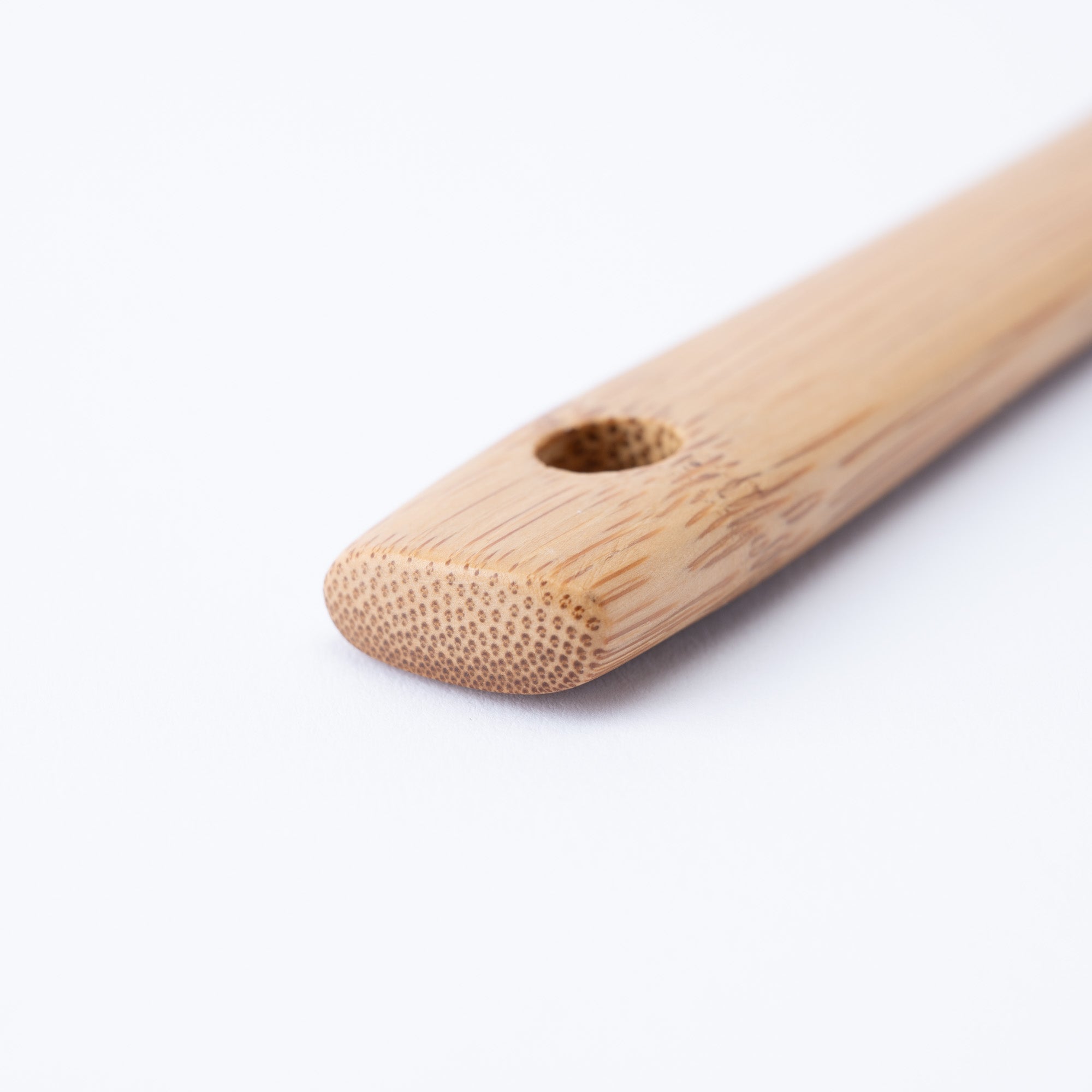
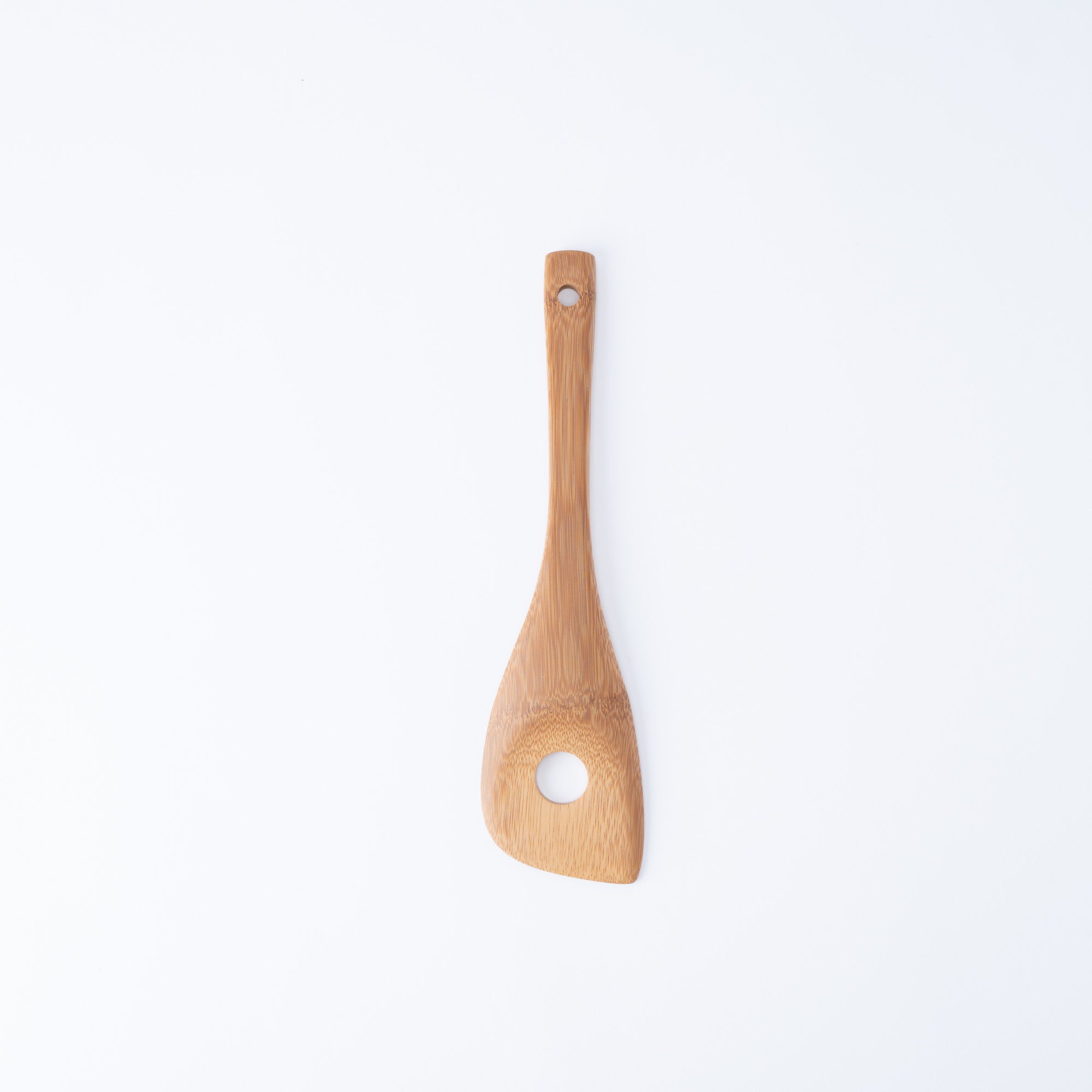
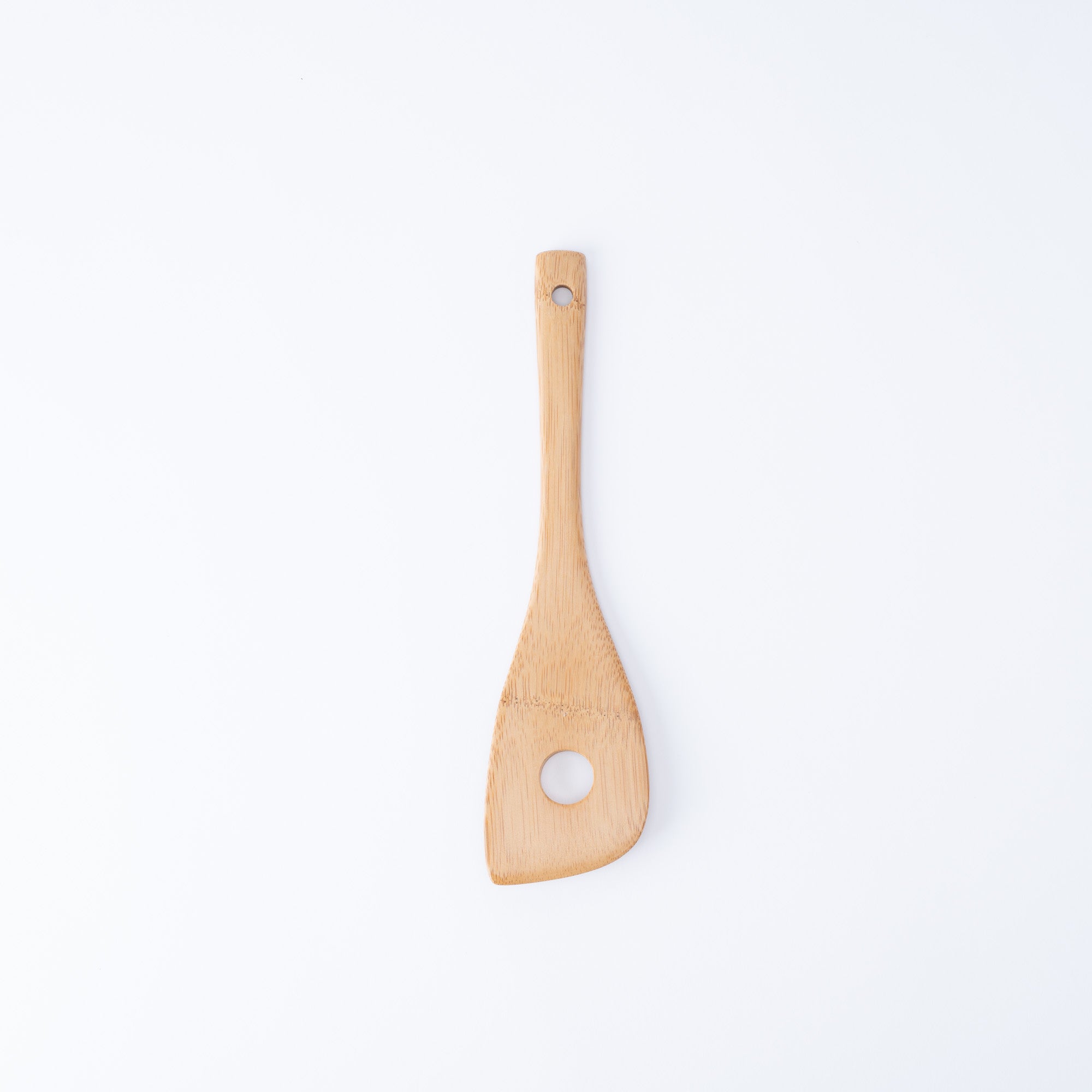
Bamboo Spatula
Estimated Shipping Widget will be displayed here!
This lightweight cooking spatula is made from susudake—bamboo that has been smoked to enhance its strength and durability. The handle fits comfortably in the hand, allowing for a natural angle when stir-frying or mixing. It is gentle on cookware surfaces and safe for use with nonstick or Teflon-coated pans. All of these features make it ideal for everyday cooking.
A slotted version is also available. The round hole at the center helps ease resistance, allowing soups and sauces to be stirred smoothly and effortlessly. It also introduces air as you mix, helping to prevent ingredients from sticking—making it an excellent choice for stir-frying.
Susudake is not only strong and long-lasting but also naturally resistant to insects and mold. Over time, the bamboo develops a smooth, familiar feel in the hand—one of the many pleasures of cooking with natural materials.
DES DÉTAILS
| Quantity | 1 |
| Size | L 26.0 cm (10.2 in) x W 7.0 cm (2.8 in) |
| Material | Bamboo |
| Microwave | No |
| Dishwasher | Yes |
Fabricant / Marque
Nanpu Kougei est un fabricant d'objets artisanaux en bambou basé à Hiji, dans la préfecture d'Oita, une ville à la végétation luxuriante et au littoral étendu. L'entreprise perpétue le lien profond de la région avec ce matériau traditionnel grâce à des techniques ancestrales, et vise à faire d'Oita un leader de l'industrie japonaise du bambou.
En utilisant uniquement du bambou d'origine locale, Nanpu Kougei crée des articles fonctionnels tels que des boîtes à bento et des plateaux à passoire, chacun soigneusement tissé à la main pour convenir à un usage quotidien.
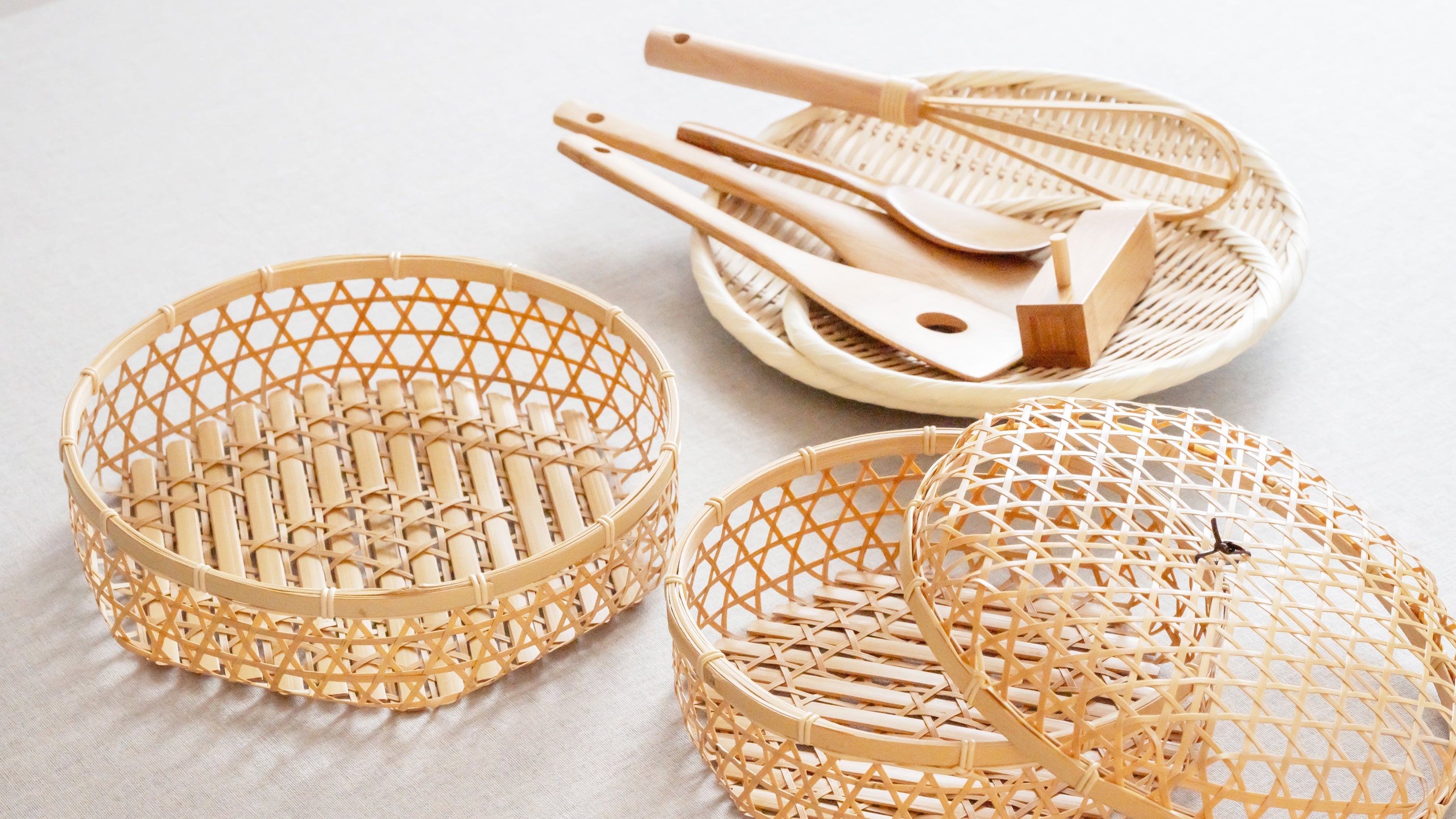
Artisanat
L'artisanat du bambou de Beppu se caractérise par Henso, technique traditionnelle de tissage et d'assemblage de bandes de bambou plates pour former des formes complexes. Désigné artisanat traditionnel du Japon en 1979, il comprend huit techniques de tissage fondamentales. En combinant ces méthodes, plus de 200 motifs différents peuvent être créés.
Originaire de Beppu, dans la préfecture d'Oita, cet artisanat témoigne d'un savoir-faire artisanal méticuleux. Chaque pièce possède un charme unique qui s'accroît avec le temps : la couleur s'intensifie, l'éclat se révèle et le plaisir d'une utilisation prolongée s'invite dans l'expérience. Leur chaleur et leur caractère apportent du réconfort par leur simple présence.
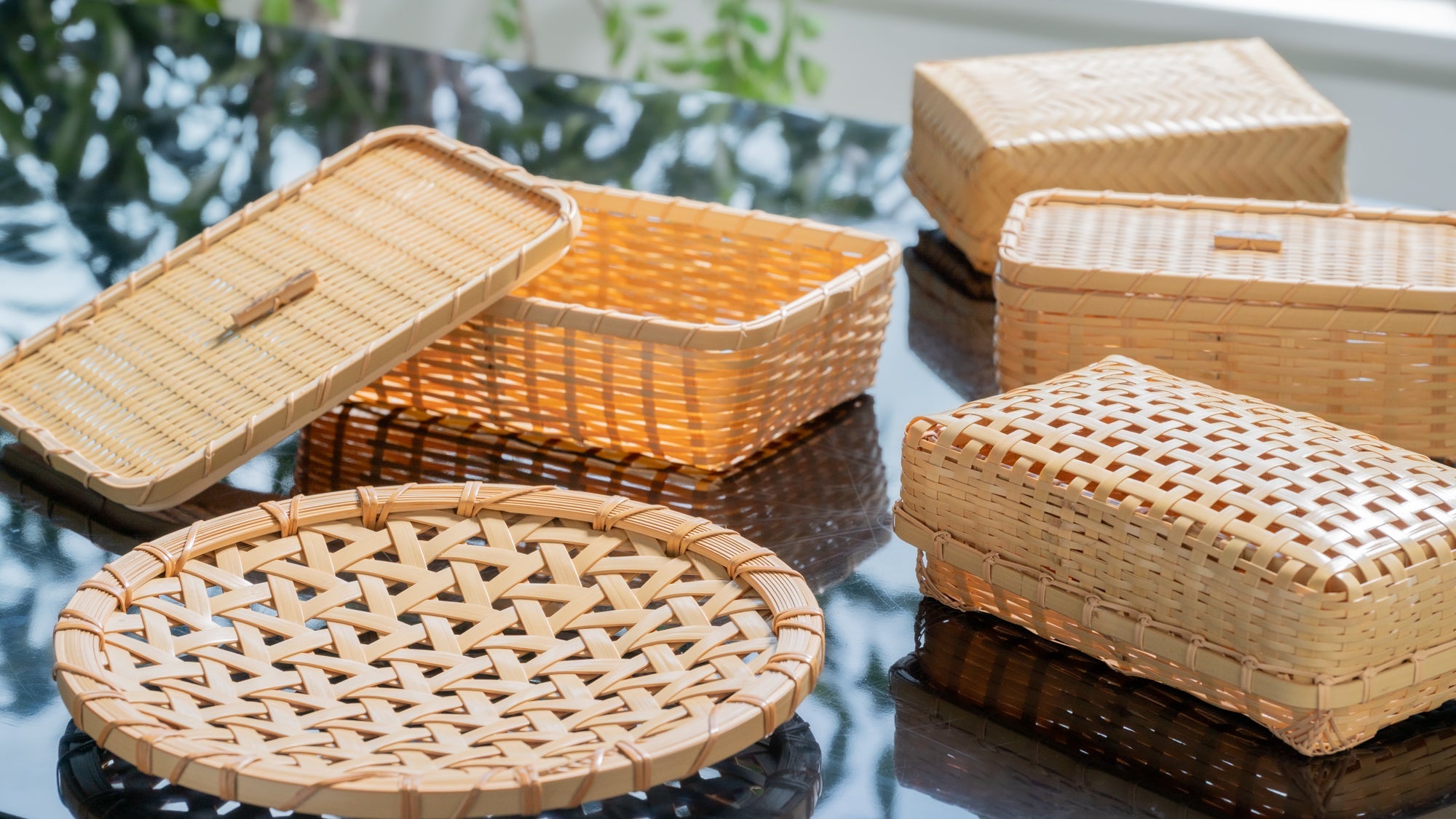
Choisir les options





















Ustensiles de cuisine
Simplifiez-vous la vie en cuisine avec notre collection d'ustensiles de cuisine japonais. Composée d'ustensiles essentiels comme des spatules, des spatules, des baguettes, des fouets et des louches, notre gamme d'ustensiles de cuisine japonais pratiques est soigneusement fabriquée par des artisans qualifiés.


